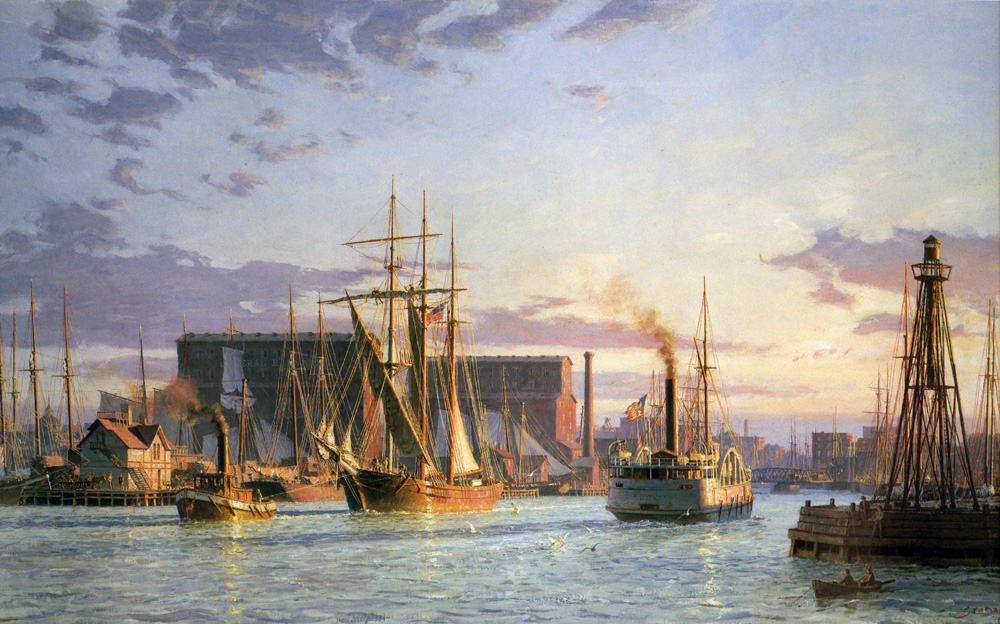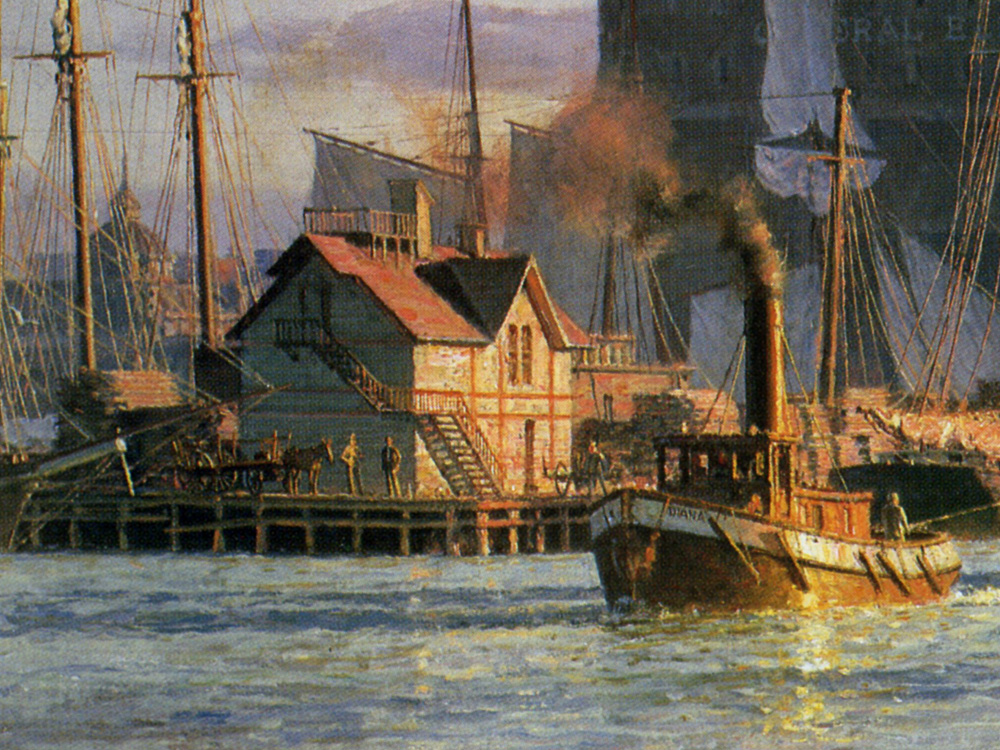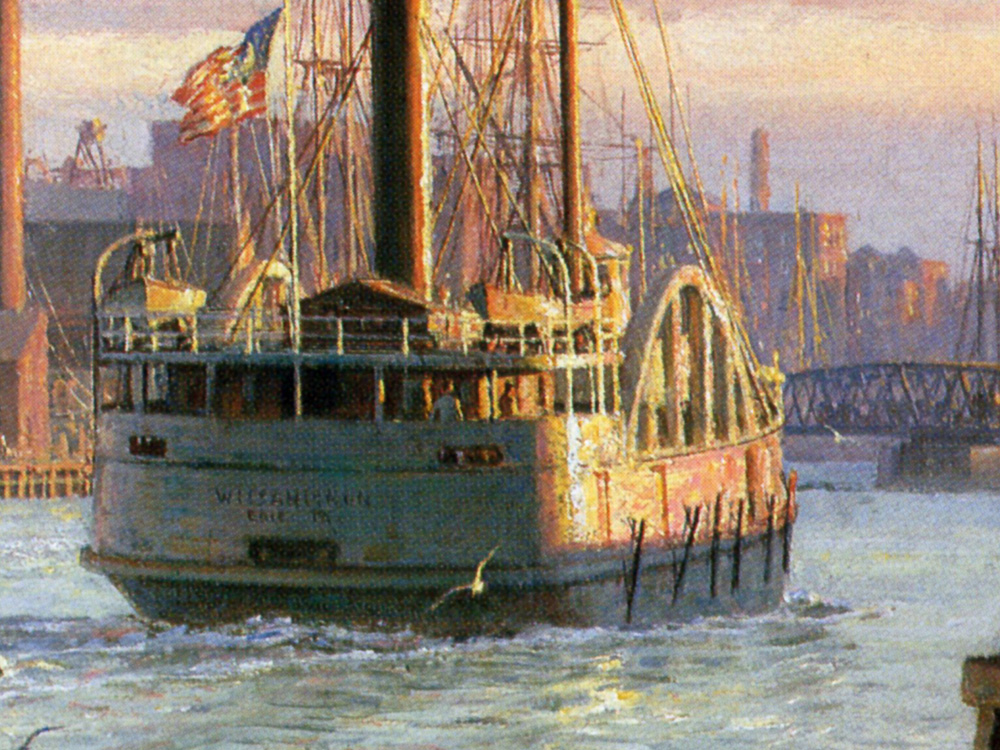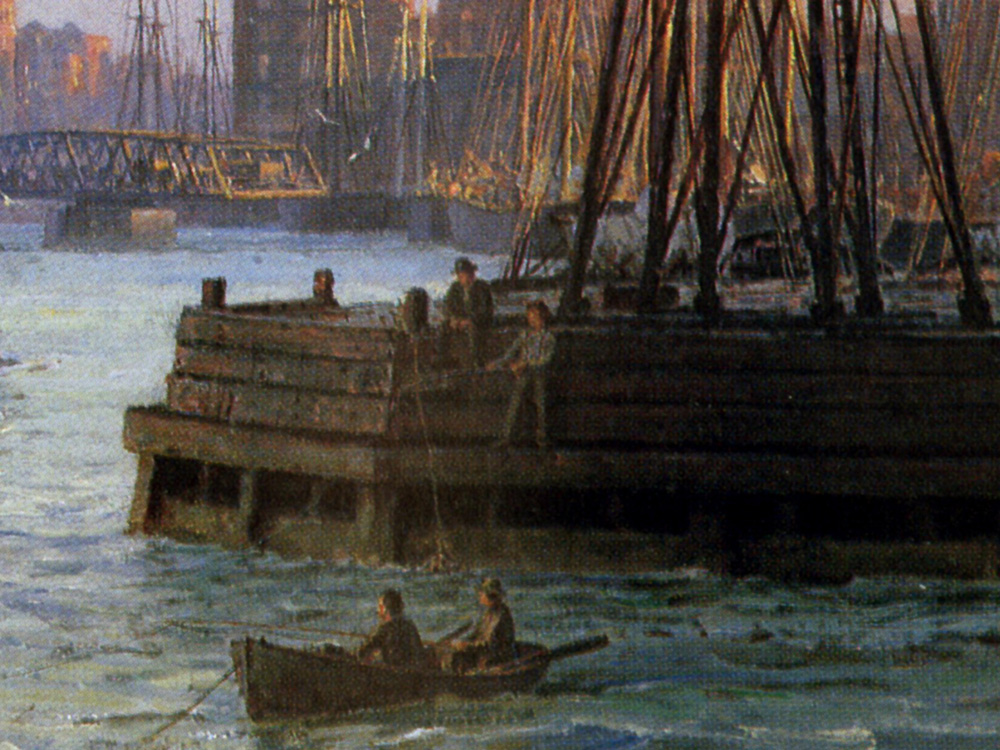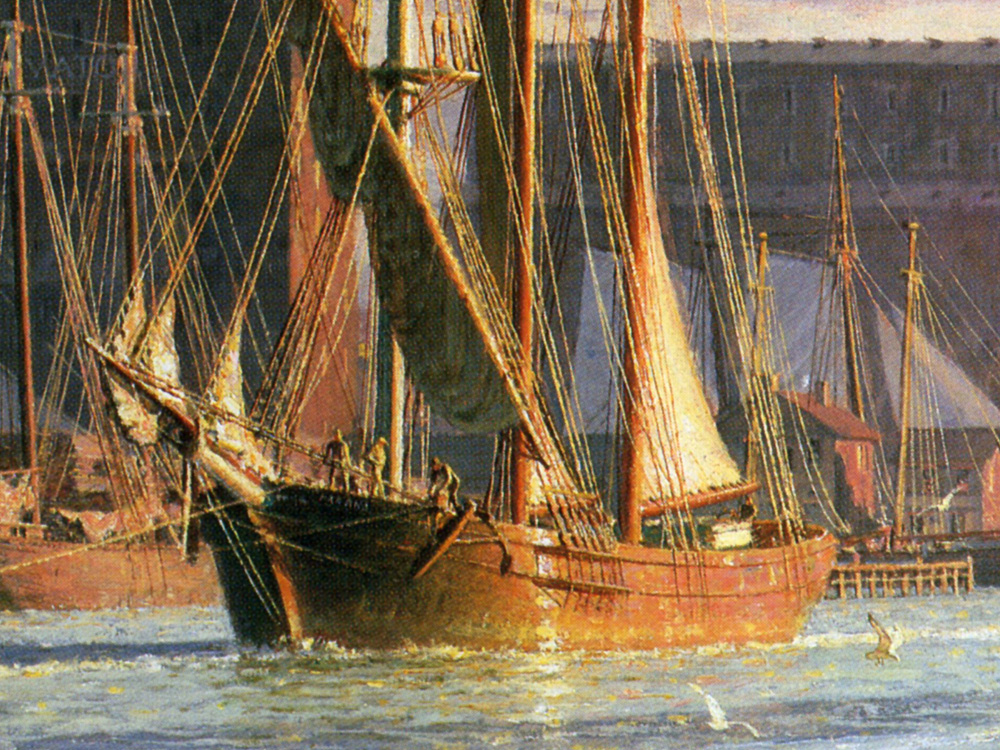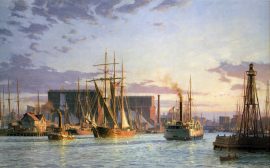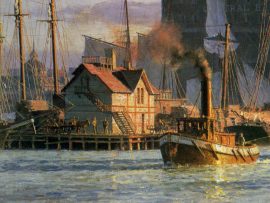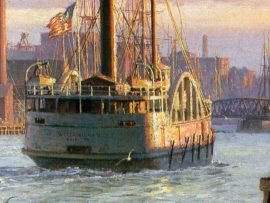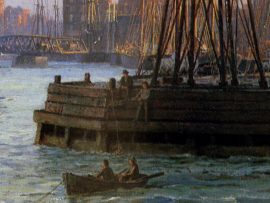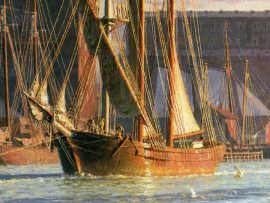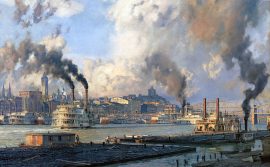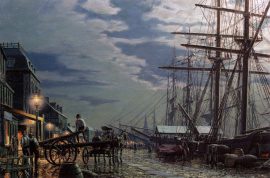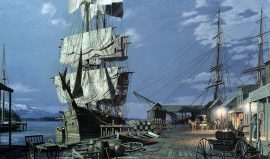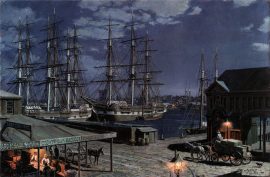Chicago: The Entrance to the River Looking West In 1876
$1,200.00
It has been said that Chicago was a port long before it became a city; that is true, if one considers the city’s position at the confluence of the Chicago River and Lake Michigan and as a waterway for the Indians who delivered pelts from the backwoods by canoe to trade for finished goods brought in along the lake to the first settlers.
Chicago was founded in 1673 when Jacques Marquette and Louis Joliet decided that the site was an excellent location for a settlement. By simply cutting a short canal over the plains running off the base of Lake Michigan, it would be possible to travel by water all the way from Canada to the Gulf of Mexico.
But this was merely a dream that was not realized for many years to come. In the meantime, Jean Baptiste Point du Sable established a trading post near Wolf Point on the north bank of the Chicago River. By 1803, Fort Dearborn was completed across the river on the south bank exactly where the present Michigan Boulevard crosses Wacker Drive.
The growth of Chicago as a great inland city exceeded all expectations and by 1833, the city counted twenty thousand residents. The real boost to Chicago’s water heritage was the opening of several man-made canals; among them, the Erie in 1825 and the Illinois and Michigan in 1848. The early dream of Marquette and Joliet was realized as various commodities such as grains, beef, and pork were barged down through the Illinois and Michigan Canal, which flowed into the Mississippi and the bustling receiving port of New Orleans.
International commerce began in the port of Chicago as early as 1856 when the schooner Dean Richmond lifted a grain cargo from Chicago to the port of Liverpool. The modern history of the Windy City as a port started with the solution of a crisis: the Chicago River was so clogged with river traffic by 1910 that an emergency bond issue was offered by the Chicago Harbor and Subway Commission to construct a large municipal pier to solve the congestion in the river. Known as Navy Pier, the five-million-dollar port improvement opened in 1916 and it was the only facility in the world that combined passenger, cargo, and public recreational facilities.
In the Calumet area of Chicago, large-bulk-handling construction was initiated and by 1935 regular international trade was established out of Chicago, which connected the inland port with European and Scandinavian ports. The completion of the St. Lawrence Seaway project enhanced Chicago’s position as a port and the city fathers’ boast that “Chicago is the undisputed center of world transportation by land, sea and air.”
| Weight | 6.00 lbs |
|---|---|
| Catalog: | Stobart-028 |
| Artist: | John Stobart |
| Dimensions: | 18" x 31" |
| Edition: | 750 |

